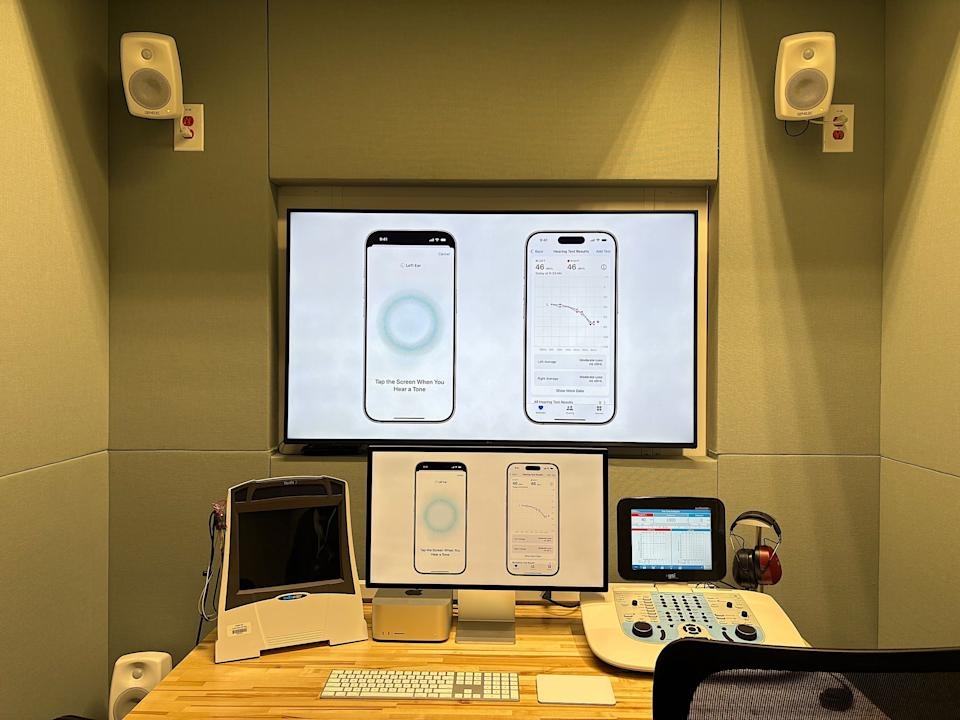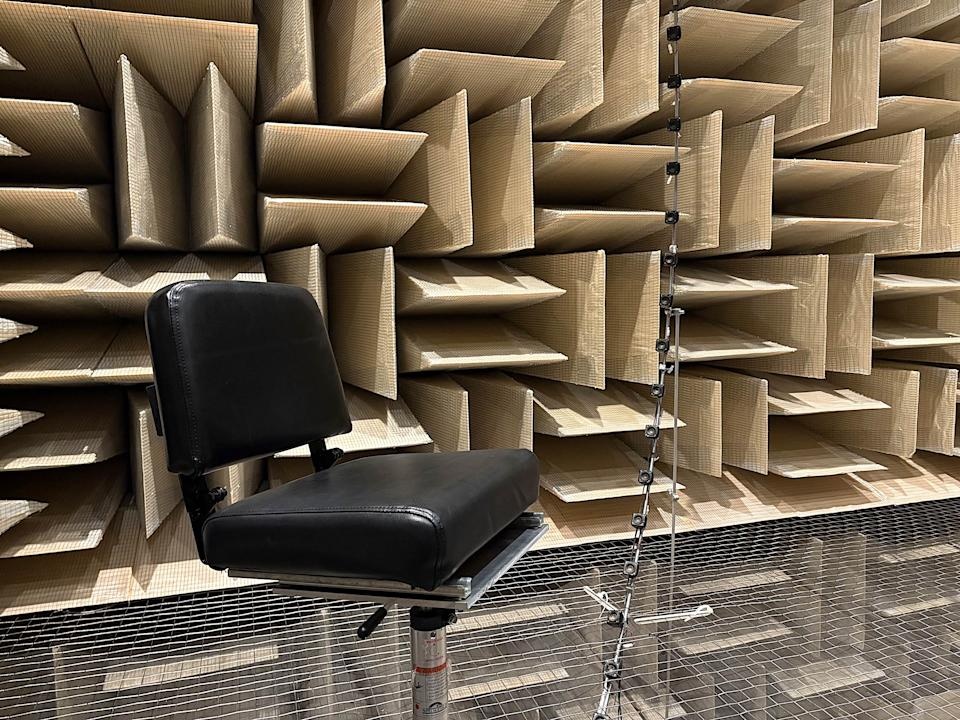 |
Fantasia Lab inside Apple's audio testing facility. Photo: Engadget . |
Passing through the reception desk of the building housing the Apple audio lab, visitors are immediately attracted by a large classic stereo system. The system and accompanying speakers were a gift from Steve Jobs to the engineers here. For the research team, this device is both a source of inspiration and a reminder of the late Apple CEO's endless passion for music .
Not only does it have sentimental value, the stereo system also emphasizes the importance of sound in every Apple product, from iPhone, iPad to AirPods.
AirPods “ear examination” rooms
Following three Apple engineers, Engadget reporters were led through a maze of hallways so ordinary it was hard to recognize this as a research center. Inside, a series of sound chambers were used to test the fit and hearing performance of AirPods.
The booths are small, windowless, and have soundproof walls. On the desks are Macs and various analysis equipment. Engineers also use audiometers, typically found in clinics, to validate Apple’s “clinical-grade hearing test” feature.
Thousands of tests were conducted to ensure the feature worked properly, allowing users to create their own hearing profiles and even set up personal hearing aids at home. This is also a stepping stone for Apple to fine-tune the listening experience to meet individual preferences and health needs.
 |
Apple's team of engineers is tasked with testing the device's sound reproduction capabilities. Photo: Engadget . |
An important part of the team's work is fine-tuning the sound for all of its audio-producing products, including Macs, iPads, and iPhones.
The iPhone maker’s team of engineers working here come from a variety of backgrounds, including concert sound, traditional studio engineering, and musical theater. Their mastering rooms are designed like miniature recording studios, complete with instruments, speakers, and an optimal listening position.
Here, engineers refer back to the original recording to understand the artist's intentions, and then apply them to the consumer product. The result is AirPods Pro 3, which is capable of reproducing more realistic sound thanks to the combination of eartip design and signal processing technology.
Absolute silence in the chamber
During development, the team listened to thousands of hours of music, movies, podcasts, and YouTube in a variety of formats including mono, stereo, and Dolby Atmos. The recordings were also rigorously tested, bringing the studio experience closer to mainstream products.
One of the most unique spaces is the anechoic chamber. This is a room completely isolated from outside vibrations. The walls, floor, and ceiling are covered with sound-absorbing foam, creating an echo-free environment.
 |
The room is completely soundproofed with thick layers of foam. Photo: Engadget . |
Those who enter are forced to walk on a suspended wire mesh as the “real floor” is actually a thick layer of foam underneath. The experience is both strange and uncomfortable, like stepping into a science fiction movie.
The final highlight is the Fantasia Lab, named after the first film to use surround sound. The room is surrounded by a spherical speaker system that can recreate any sound environment.
Here, engineers evaluated the transparency mode, active noise cancellation (ANC), and surround sound features on the AirPods Pro 3. Testers were asked to identify the direction of the sound, while different types of noise were played to test the effectiveness of ANC. With surround sound, the team tried to recreate the experience of being at a theater or a live concert.
Source: https://znews.vn/bi-mat-dang-sau-thanh-cong-cua-airpods-post1586294.html



![[Photo] General Secretary To Lam meets voters in Hanoi city](https://vphoto.vietnam.vn/thumb/1200x675/vietnam/resource/IMAGE/2025/9/23/d3d496df306d42528b1efa01c19b9c1f)
![[Photo] Editor-in-Chief of Nhan Dan Newspaper Le Quoc Minh received the working delegation of Pasaxon Newspaper](https://vphoto.vietnam.vn/thumb/1200x675/vietnam/resource/IMAGE/2025/9/23/da79369d8d2849318c3fe8e792f4ce16)

![[Photo] Prime Minister Pham Minh Chinh chairs the 14th meeting of the Steering Committee on IUU](https://vphoto.vietnam.vn/thumb/1200x675/vietnam/resource/IMAGE/2025/9/23/a5244e94b6dd49b3b52bbb92201c6986)
![[Photo] The 1st Congress of Party Delegates of Central Party Agencies, term 2025-2030, held a preparatory session.](https://vphoto.vietnam.vn/thumb/1200x675/vietnam/resource/IMAGE/2025/9/23/e3a8d2fea79943178d836016d81b4981)




















































































Comment (0)